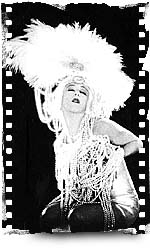
"Salome," (1922), starring Alla Nazimova and screening tonight at UCLA, "is an amazing film," says film historian Bruce Posner.
File photo

 "Salome," (1922), starring Alla Nazimova and screening tonight at UCLA, "is an amazing film," says film historian Bruce Posner. File photo |